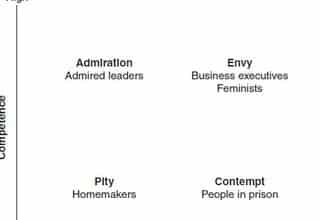Have you ever asked yourself why you want to be a leader? There are easier (and more profitable) professions. So what motivated you down this career path? With some reflection, you may realize that you are a Veep.
Veep refers to the HBO series about Vice President Selina Meyer (Julia Louis-Dreyfus) and her navigation through the political melee in Washington, D.C. While funny and seemingly outrageous, more than one Washington insider has cited how eerily accurate it portrays politicians and operatives.
Meyer and the rest of the characters are painted as either dominant-driven or desperate for adoration. Coincidentally, a new research study from Kellogg’s Jon Maner and Charleen Case examined these two leadership styles and how they are used in different kinds of organizations. The study shows a strong correlation between a desire for power and being motivated by both dominance and prestige, although one tends to be more overriding than the other.
Leaders leaning towards dominance rely on intimidation and coercion. They demand respect and strong-arm to ensure that others are following them. On the other hand, leaders motivated by prestige are more concerned with being liked. They attempt to earn respect and consider themselves to be a role model for the team.
If you have some preconceptions about which style is more effective, they each have pros and cons depending on the circumstances. According to the study, dominant-oriented leaders tend to make swift decisions and can successfully unite their team behind a single vision. But be warned, they are also willing to sacrifice the best interest of the group so as to remain in power.
I’m the Vice President of the United States…! These people should be begging me! That door should be half its height so that people can only approach me in my office on their
knees!—Selina Meyer
Prestige-oriented leaders are skilled at fostering creativity; however, because their power is based on being liked, they have a tendency to make popular decisions over the “right” decision…or do they? The research shows that these leaders will block what they see as the best course of action when making a public decision that will be unpopular, yet if the decision is made without others knowing, these leaders will choose the best option for the group.
You bet it was. It was a huge pleasure to meet me.—Selina Meyer
So what kind of leader are you, a transparent bully or a duplicitous chum? Would it surprise you if I suggested you be both? According to Maner:
When you need all the people on your team to present a unified front and move quickly in a common direction, when you don’t have time to have people thinking outside the box, that situation really calls for a dominant leader. Conversely, if you’re trying to get your team to innovate or produce creative solutions, that calls for more of a prestige-oriented strategy.
Successful leaders possess the insight and emotional intelligence to read the situation, know how they are perceived, and understand their organization’s culture. After assessing, they can then determine whether to employ dominance or prestige. It may take another second of thought, but one size does not fit all. Even Selina Meyer knows that (even if she does not adhere to it).







